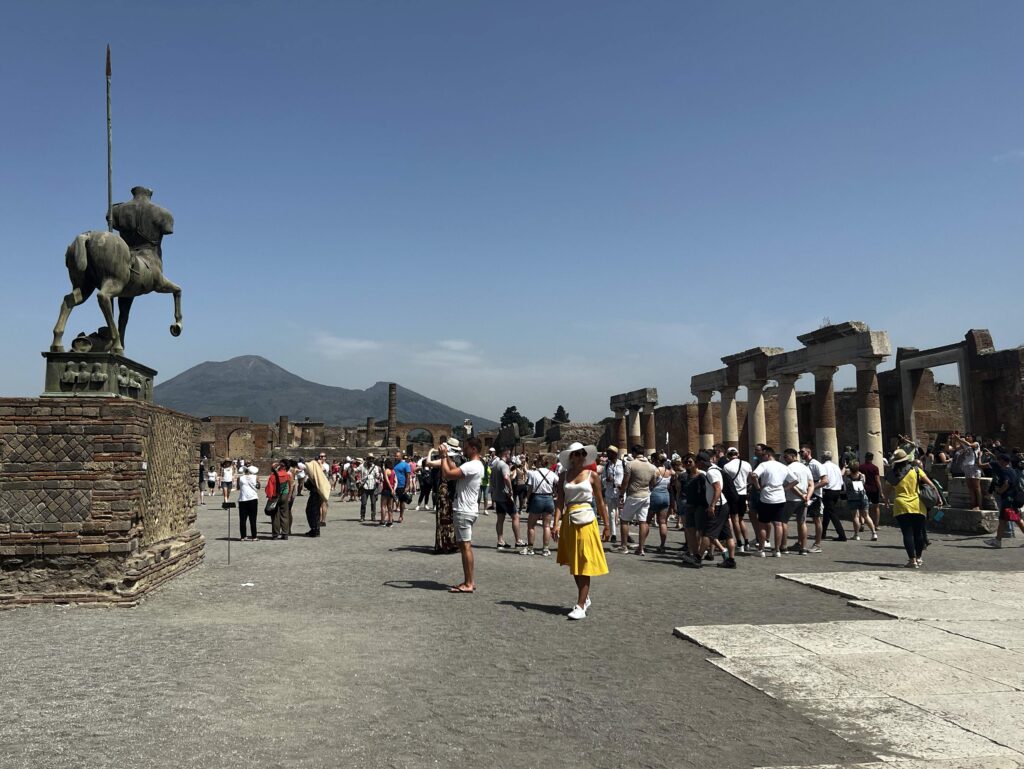My first inkling that Buenos Aires would be a friendly sort of place came while I was still in Dallas, waiting for my connecting flight. A man sitting next to me struck up a conversation, and when he discovered it was my first trip to his hometown he started listing all the places I had to see. He then interrupted an Argentinian couple sitting across from us to ask them their recommendations. Soon they were all discussing the highlights of Buenos Aires. I felt welcome before even stepping foot in Argentina.

And so it was throughout my week’s stay. Taxi drivers were talkative and animated, especially upon discovering that my travel companion spoke fluent Spanish; it was the first place I’ve ever visited where taxi drivers shook our hands at the end of the ride.
Buenos Aires has a population of about 2.89 million, yet the people I met were considerate and happy to help wayward visitors find their way. Porteños (as residents of Buenos Aires are called) patiently and politely wait in queues, whether it’s for a taxi, the bus or the checkout line at the store. They apologize if they accidentally bump into you, even on crowded streets, which caught me by surprise after the bodily assault that happens in Hong Kong. Store clerks are friendly and unruffled even if you try on ten shirts and end up buying nothing, as though that was the most natural thing in the world. Restaurants let you sit for as long as you like. In the subway I saw younger people proffer their seats to the elderly.

Certainly the laid-back demeanor of its people is one reason Buenos Aires is easy to love, but I also admire the stately central district full of portly buildings and wide avenues that remind me of Madrid. Palermo is clearly the most hip neighborhood, with sidewalk cafes, clothing boutiques selling funky fashions, lively bars, plazas with weekend markets and cool restaurants offering waffles, Mexican fare and the ubiquitous steaks and pasta. Trees everywhere give the city a soft edge to its jumble of architecture, especially the shaggy sycamores that stretch past balconied apartments toward the sky. Where else might you hear an owl hooting every night, right in the middle of a metropolis?

In a week I think I saw pretty much everything you could possibly hope to see, including the contemporary Museum of Latin American Art of Buenos Aries, the botanical and Japanese gardens, the rather sterile Puerto Madero with its modern architecture and restored brick warehouses filled with restaurants, and La Boca district with its artisan street stalls, colorfully painted storefronts and tango dancers.
Among my favorite places was the Recoleta Cemetery, one of the most impressive I’ve ever seen. More than 4,000 vaults topped with imposing mausoleums and memorials crowd a labyrinth of tiny streets. Many presidents and other important Argentinians are buried

here, including Eva Peron, whose mausoleum is adorned with flowers left by adoring fans and plaques put up by various organizations. Many of the mausoleums have glass doors showing photos of the deceased, urns for the cremated and caskets. But others are decrepit and unkempt, lined with decaying coffins and woven throughout with cobwebs. I noticed that many mausoleums have stairways leading below ground, but it wasn’t until I found one with its glass doors and windows missing that I could peer into the crypt and discern rows of old wooden coffins stacked on shelves and descending into the dark bowels of the earth. Every vault has a story, but it was a sobering reminder that even the moneyed who could afford to be buried here are edging ever closer toward oblivion.
Of course I visited markets, always my favorite thing to do in any city, including the never-ending Sunday market of San Telmo with its crafts, clothing and antiques and the weekend markets in Palermo’s Plaza Cortazar and Plaza Viejo Palermo.

But my favorite was the Feria de Mataderos, a festive affair held astoundingly every single Sunday, featuring a market selling folk crafts and local foods, gauchos with their horses, a musty but interesting gaucho museum and, best of all, a stage with folk singers and dancers; even the audience joined in traditional dances. It was very much a family affair and worth the hour’s bus ride to reach it.


Among many observations from my week of walking the streets of Buenos Aires is that Porteños love their dogs, but they don’t like cleaning up after them. The tiled sidewalks are also minefields because of crumbling or missing pieces, inexplicable deep holes and buckling surfaces due to all those sycamores.
Argentinian bidets are sadistic, at least the ones I encountered, shooting straight up and with no discernible way to control temperature or pressure. The overriding women’s fashion is leggings, regardless of whether it’s a teenager or grandmother, and the very popular platform shoes make traversing the sidewalks even more of a hazard. It’s not a look I’m likely to adopt any time soon, but there are many other aspects of life in Buenos Aires that make me wish I were a porteña. A bonus: my Spanish also improved.
In short, I found the city livable and lovable. Buenos is very much like a European city with a Latin Beat.


For more stories on Buenos Aires, see my posts Buenos Aires Loves its Dogs and and When Argentina Killed its Young. Farther afield, read my posts Mendoza is Argentina’s Premier Wine Region and Falling for Iguazu Falls.





